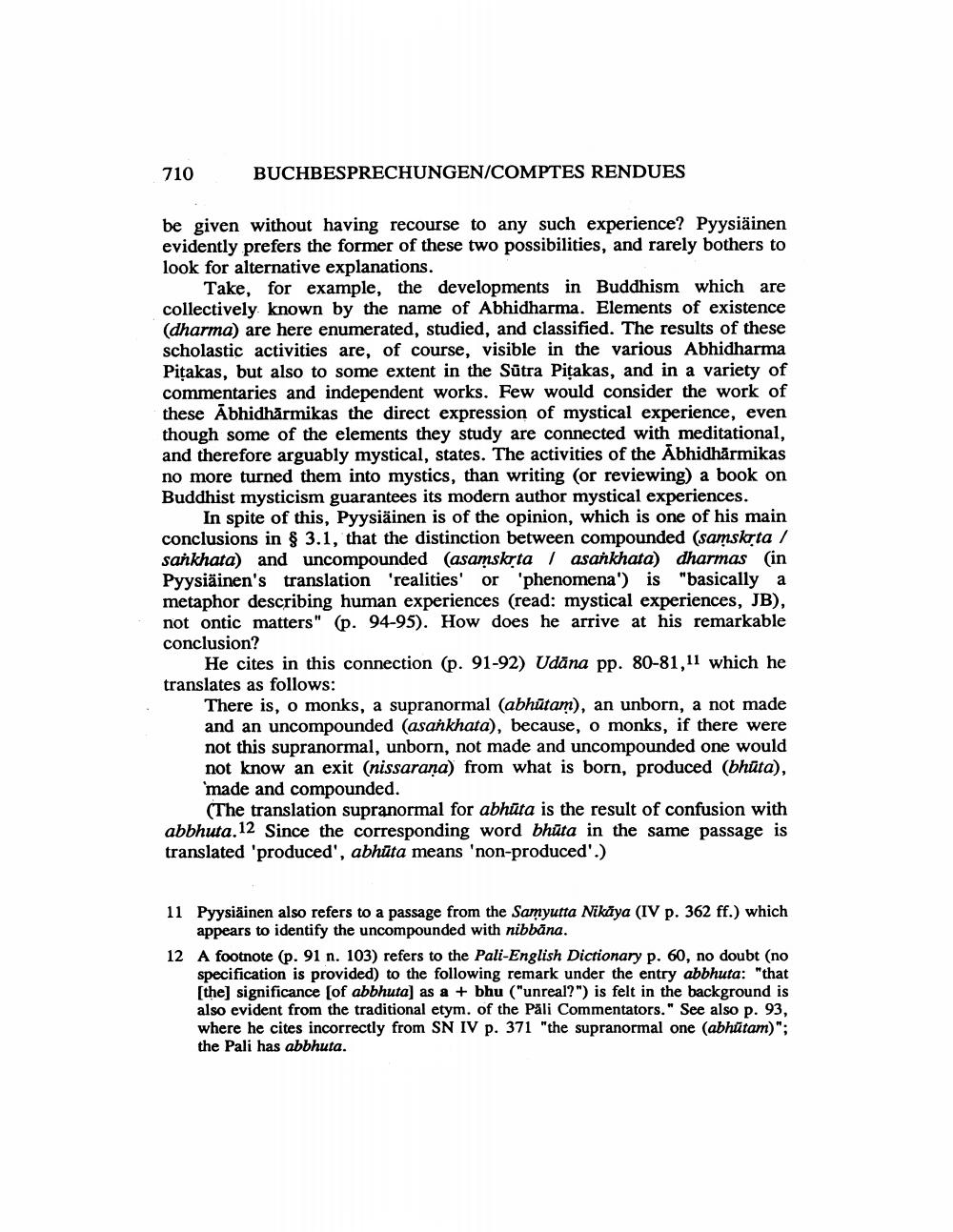________________
710
BUCHBESPRECHUNGEN/COMPTES RENDUES
be given without having recourse to any such experience? Pyysiäinen evidently prefers the former of these two possibilities, and rarely bothers to look for alternative explanations.
Take, for example, the developments in Buddhism which are collectively known by the name of Abhidharma. Elements of existence (dharma) are here enumerated, studied, and classified. The results of these scholastic activities are, of course, visible in the various Abhidharma Pitakas, but also to some extent in the Sutra Pitakas, and in a variety of commentaries and independent works. Few would consider the work of these Abhidharmikas the direct expression of mystical experience, even though some of the elements they study are connected with meditational, and therefore arguably mystical, states. The activities of the Abhidharmikas no more turned them into mystics, than writing (or reviewing) a book on Buddhist mysticism guarantees its modern author mystical experiences.
In spite of this, Pyysiäinen is of the opinion, which is one of his main conclusions in § 3.1, that the distinction between compounded (samskṛta / sahkhata) and uncompounded (asamskṛta asahkhata) dharmas (in Pyysiäinen's translation 'realities' or 'phenomena") is "basically a metaphor describing human experiences (read: mystical experiences, JB), not ontic matters" (p. 94-95). How does he arrive at his remarkable conclusion?
He cites in this connection (p. 91-92) Udāna pp. 80-81,11 which he translates as follows:
There is, o monks, a supranormal (abhūtam), an unborn, a not made and an uncompounded (asankhata), because, o monks, if there were not this supranormal, unborn, not made and uncompounded one would not know an exit (nissarana) from what is born, produced (bhūta), 'made and compounded.
(The translation supranormal for abhūta is the result of confusion with abbhuta.12 Since the corresponding word bhūta in the same passage is translated 'produced', abhata means 'non-produced'.)
11 Pyysiäinen also refers to a passage from the Samyutta Nikaya (IV p. 362 ff.) which appears to identify the uncompounded with nibbana.
12 A footnote (p. 91 n. 103) refers to the Pali-English Dictionary p. 60, no doubt (no specification is provided) to the following remark under the entry abbhuta: "that [the] significance [of abbhuta] as a + bhu ("unreal?") is felt in the background is also evident from the traditional etym. of the Pali Commentators." See also p. 93, where he cites incorrectly from SN IV p. 371 "the supranormal one (abhūtam)"; the Pali has abbhuta.




